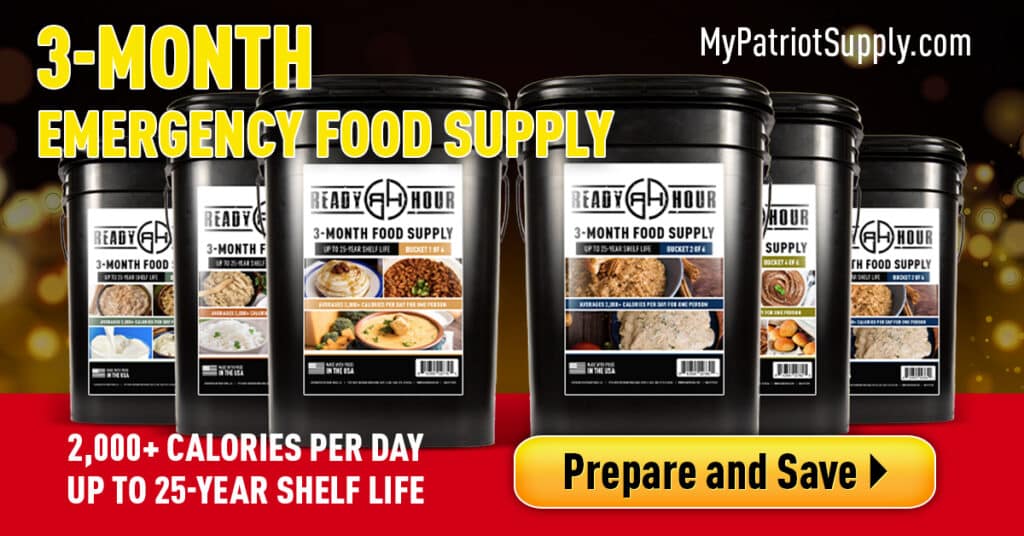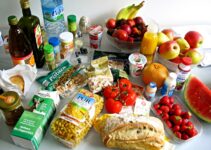Are you a prepper looking to build an emergency food supply? In this article, we will discuss the importance of having an emergency food supply for preppers, steps to build one, and how to store and rotate it properly, as well as potential risks and challenges to consider.
Understanding Prepping
Prepping is the act of preparing for disaster or emergency situations. This can include natural disasters, power outages, economic collapse, or any other scenario that may disrupt the supply chain of food, water, and other necessities. Prepping is necessary because it allows individuals to be self-sufficient and not rely on others or the government during times of crisis.
Prepping is not just for those living in rural areas or with specific skills. Anyone can be a prepper, regardless of age, gender, or social status.
The Importance of an Emergency Food Supply for Preppers
In any emergency situation, food is a basic necessity, and having a well-stocked supply is crucial for survival. An emergency food supply is important for several reasons. First, it provides peace of mind knowing that you and your loved ones have enough food to last for an extended period. In times of crisis, grocery stores may be closed, or the supply chain may be disrupted, making it challenging to obtain food.
Second, an emergency food supply allows preppers to be self-sufficient and not rely on others or the government for assistance. This is particularly important in situations where emergency services may be overwhelmed or unable to provide assistance.
Lastly, an emergency food supply can help preppers save money in the long run. By purchasing non-perishable items in bulk, preppers can save money and avoid the rising costs of food during times of crisis.
Choosing Nutrient-Dense Foods
When building an emergency food supply for preppers, it is important to prioritize nutrient-dense foods. These are foods that provide a high amount of nutrients per calorie, such as canned fruits and vegetables, whole grains, and lean proteins.
It is also important to include a variety of foods to ensure a balanced diet. For example, including freeze-dried fruits and vegetables can add variety and provide essential nutrients.
Building an Emergency Food Supply for Preppers
Building an emergency food supply for preppers involves several steps. The first step is to determine the amount of food needed based on the number of people, the length of the emergency, and the type of emergency.
The general rule of thumb is to have at least a three-day supply of non-perishable food items for each person. However, preppers may want to consider building a supply that can last for several weeks or even months.
When choosing non-perishable food items for an emergency food supply, it is important to consider the shelf life and nutritional value. Canned goods, freeze-dried foods, and MREs (Meals Ready to Eat) are all good options.
Choosing Non-Perishable Food Items
Non-perishable food items are an excellent option for an emergency food supply for preppers. These foods have a long shelf life and can be stored without refrigeration, making them ideal for emergency situations.
Canned goods, such as canned fruits and vegetables, beans, and soups, are excellent options. They are affordable, have a long shelf life, and are easy to store. It is important to check the expiration dates before purchasing and rotate the stock regularly.
Freeze-dried foods are another great option for an emergency food supply. They are lightweight, have a long shelf life, and can be rehydrated with water. Freeze-dried fruits and vegetables are an excellent source of nutrients and can add variety to the diet.
MREs (Meals Ready to Eat) are pre-packaged meals that are designed to be eaten without cooking. They are commonly used by the military and are an excellent option for an emergency food supply as they are lightweight, have a long shelf life, and are easy to prepare.
When building an emergency food supply, it is essential to consider personal preferences and nutritional needs. For example, individuals with dietary restrictions may need to include specialized food items in their supply, such as gluten-free products or lactose-free milk.
Types of Emergency Food Supplies for Preppers
There are three main types of emergency food supplies for preppers: canned goods, freeze-dried foods, and MREs. Each type has its pros and cons and is best suited for different emergency situations.
Canned goods are an excellent option for short-term emergencies. They are affordable, have a long shelf life, and are easy to store. However, they can be heavy and bulky, making them challenging to transport.
Freeze-dried foods are an excellent option for longer-term emergencies. They are lightweight, have a long shelf life, and are easy to store. However, they can be more expensive than canned goods and may require additional water for rehydration.
MREs are an excellent option for emergencies that require quick and easy preparation. They are lightweight, have a long shelf life, and are easy to prepare. However, they can be more expensive than canned goods and freeze-dried foods.
Storing and Rotating Your Emergency Food Supply for Preppers
| Potential Risks and Challenges | Solutions |
|---|---|
| Food spoilage | Regularly check expiration dates and rotate the stock. Consider using a first-in, first-out system. |
| Lack of variety | Include a variety of non-perishable food items, such as freeze-dried fruits and vegetables. |
| Specialized equipment needed for preparation | Research and invest in the necessary equipment for cooking and preparing the chosen non-perishable food items. |
| Storage space limitations | Consider using space-saving storage options, such as vacuum-sealed bags or storage containers. |
| Allergic reactions or dietary restrictions | Choose non-perishable food items that meet personal dietary needs, such as gluten-free products or lactose-free milk. |
When building an emergency food supply for preppers, it is important to consider potential risks and challenges that may arise. Food spoilage is a common risk, but it can be prevented by regularly checking expiration dates and rotating the stock. Lack of variety can also be a challenge, but this can be addressed by including a variety of non-perishable food items, such as freeze-dried fruits and vegetables.
Specialized equipment may be needed for cooking and preparing certain non-perishable food items, so it is important to research and invest in the necessary equipment. Storage space limitations can also be a challenge, but space-saving storage options, such as vacuum-sealed bags or storage containers, can be used.
Finally, allergic reactions or dietary restrictions must be considered when choosing non-perishable food items. Individuals with dietary restrictions may need to include specialized food items in their supply, such as gluten-free products or lactose-free milk.
Proper storage is crucial for an emergency food supply for preppers. The food must be stored in a cool, dark place, away from moisture and sunlight.
There are several storage options available, such as a pantry, shelves, or a storage room. It is important to keep the food containers off the floor and ensure that they are not exposed to extreme temperatures.
It is also important to rotate the stock regularly and check the expiration dates. This ensures that the food remains fresh and edible. Preppers should consider using a first-in, first-out system to ensure that the oldest food is used first.
It is essential to be aware of the potential risks and challenges of building an emergency food supply. For example, some types of food may spoil more quickly than others, or specialized equipment may be needed to prepare certain types of food.
Personal Story: How Having an Emergency Food Supply Saved My Family During a Hurricane
During the height of Hurricane Katrina, my family and I were stranded in our home for several days without access to electricity or running water. We had stocked up on emergency supplies, including non-perishable food items, canned goods, and bottled water, but we quickly realized that our food supply wasn't enough to last us through the storm.
Luckily, we had also purchased a few freeze-dried food packages, which we had initially thought were unnecessary. These packages turned out to be a lifesaver as they were easy to store and prepare, requiring only hot water to rehydrate. They provided us with much-needed nutrition and helped us get through the days without access to fresh food.
Since then, my family and I have made it a priority to have a well-stocked emergency food supply that includes a variety of non-perishable and freeze-dried foods. We rotate our supplies regularly and make sure to check expiration dates to ensure that everything is fresh and ready to use in case of an emergency.
Having experienced the importance of having an emergency food supply firsthand, I encourage all preppers to take the necessary steps to prepare for emergencies and to invest in a well-stocked and properly stored emergency food supply.
Conclusion
Having an emergency food supply for preppers is crucial for survival during times of crisis. Building, storing, and rotating an emergency food supply involves several steps, but it is well worth the effort.
By prioritizing nutrient-dense foods, choosing non-perishable food items, and storing the food properly, preppers can ensure that they and their loved ones have enough food to last during emergency situations.
Take action today and start building your emergency food supply for preppers, considering personal preferences, nutritional needs, and potential risks and challenges.
Questions and Answers
Q. Who needs an emergency food supply for preppers?
A. Anyone who wants to be prepared for disasters.
Q. What should be included in an emergency food supply for preppers?
A. Non-perishable, high-calorie, and easy-to-prepare foods.
Q. How long can an emergency food supply for preppers last?
A. It depends on the size of the supply and number of people, but typically 3-12 months.
Q. What if I have special dietary needs?
A. Look for emergency food supplies that cater to your specific needs.
Q. How do I store my emergency food supply for preppers?
A. Keep it in a cool and dry place, away from direct sunlight and pests.
Q. What if I can't afford an emergency food supply for preppers?
A. Start small and gradually build up your supply over time.
The author of this guide on emergency food supply for preppers has over a decade of experience in the food industry. They have worked extensively with food storage and preservation techniques, and have a deep understanding of the nutritional content of different types of food. Additionally, they have spent several years studying the prepper movement and have firsthand experience with building and maintaining an emergency food supply.
Their expertise is backed by a number of studies and sources, including the Journal of Food Science and the USDA's guidelines for safe food storage. The author strongly believes that having a well-stocked emergency food supply is essential for anyone who wants to be prepared for unexpected emergencies, and they have put together this comprehensive guide to help preppers build, store, and rotate their supplies effectively.
Their passion for this topic comes from a personal experience with a natural disaster that left them without access to food or clean water for several days. They understand the importance of being prepared and want to share their knowledge with others to ensure that everyone can stay safe and healthy in any situation.





